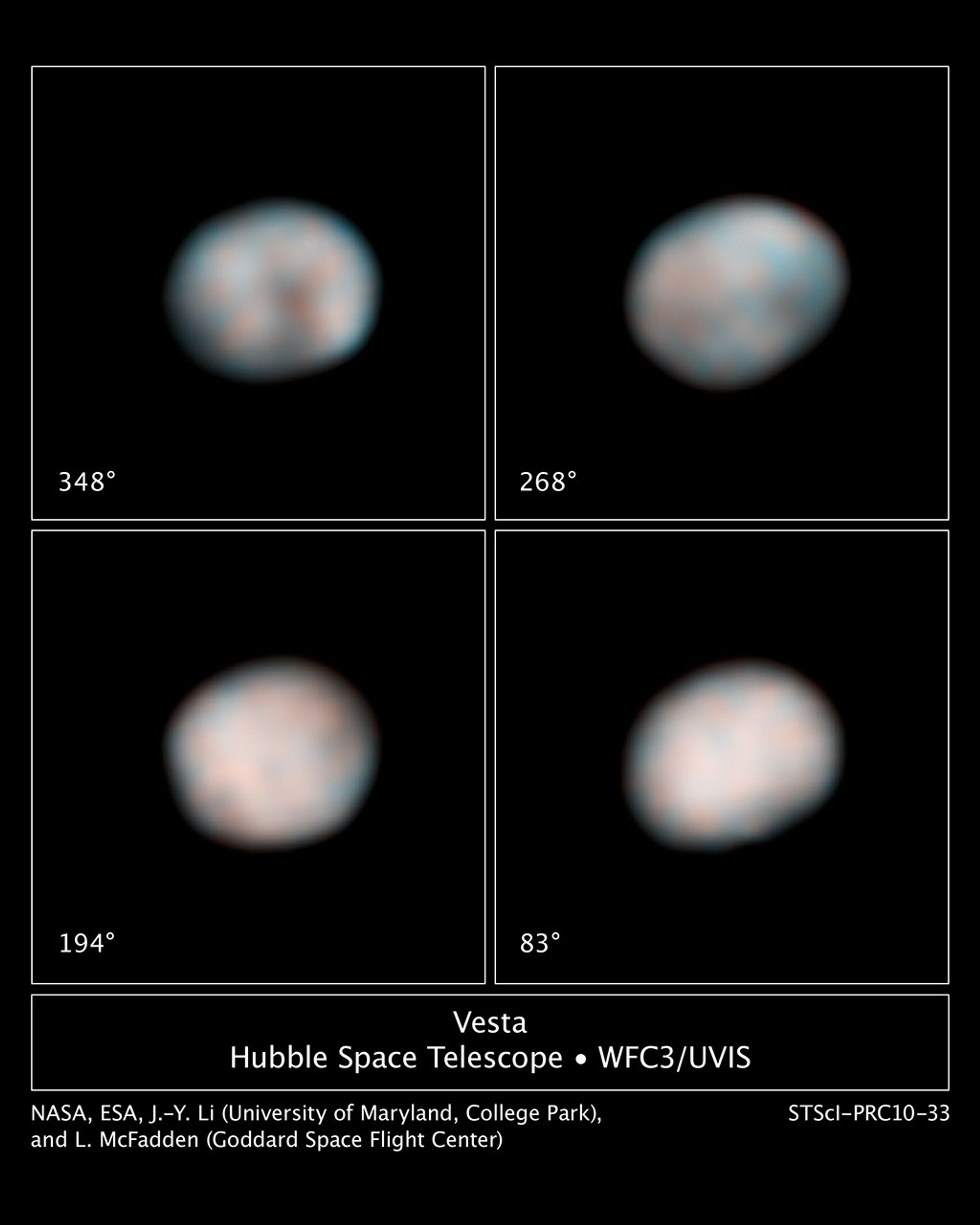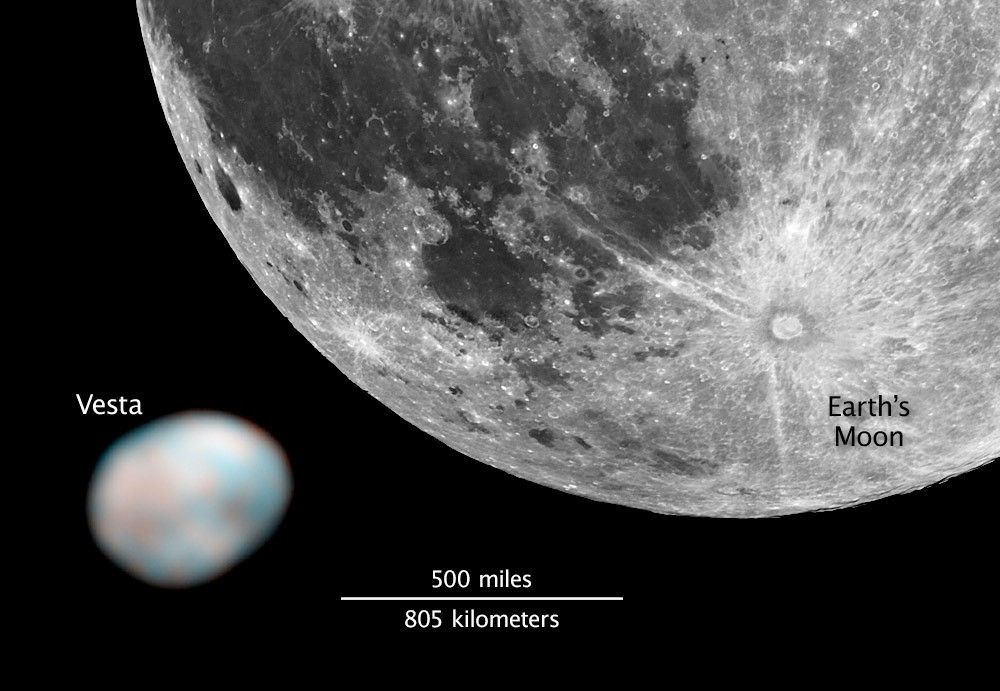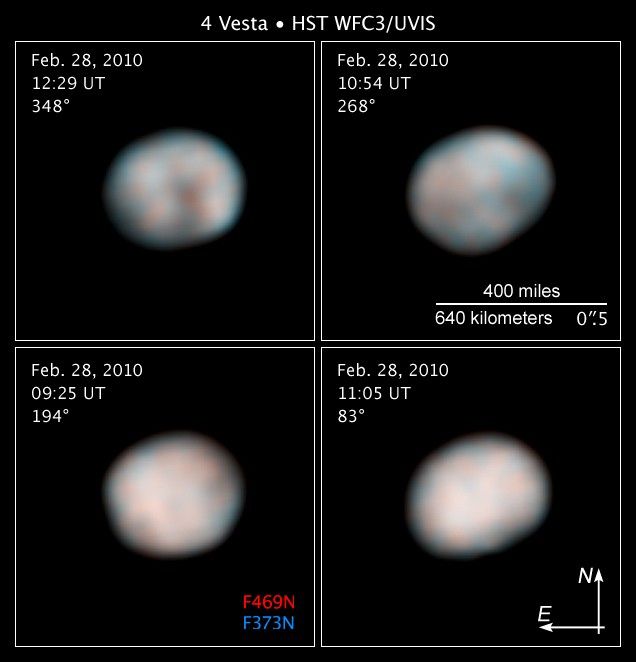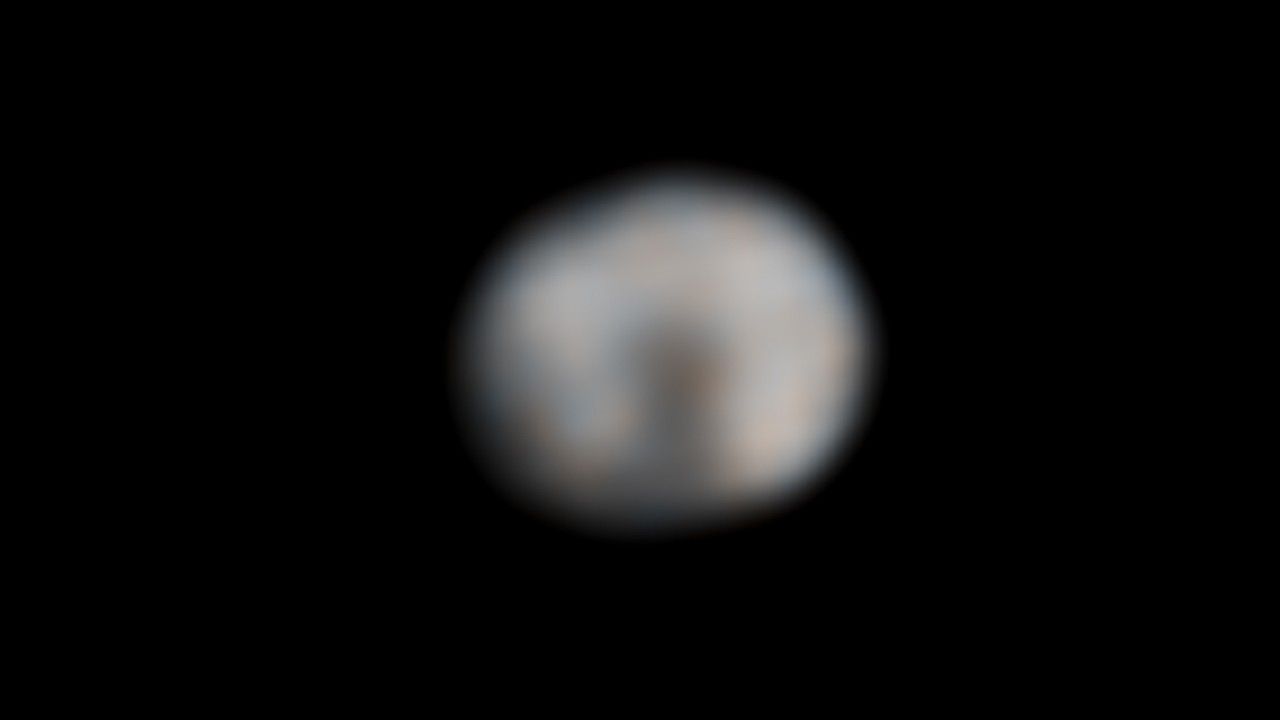1 min read
The Faces of Vesta

NASA's Hubble Space Telescope snapped these images of the asteroid Vesta in preparation for the Dawn spacecraft's visit in 2011.
Each of the four Hubble images captures views of Vesta during its 5.34-hour rotation period. Hubble's sharp "eye" can see features as small as about 25 miles (40 kilometers) across in these images. Vesta was 131 million miles (211 kilometers) from Earth when Hubble made the observations.
The images show the difference in brightness and color on the asteroid's surface. These characteristics hint at the large-scale features that the Dawn spacecraft will see when it visits the potato-shaped asteroid.
Vesta is somewhat like our Moon, with ancient lava beds (the dark patches) and powdery debris, the pulverized remains of impacts (the orange-colored areas). The flattened area on one end of Vesta, visible in the top row of images, is a giant impact crater formed by a collision billions of years ago. The crater is 285 miles (460 kilometers) across, which is close to Vesta's roughly 330-mile (530-kilometer) diameter. Vesta is about the size of Arizona.
Astronomers used the images, taken with Hubble's Wide Field Camera 3, to better determine the orientation of Vesta's spin axis.
This will help scientists refine the Dawn spacecraft's orbit around the asteroid. Dawn will orbit the rocky object for a year, beginning in July 2011. The spacecraft then will travel to the dwarf planet Ceres, arriving in 2015.
Vesta is one of the largest of a reservoir of about 100,000 asteroids, the leftover material from the formation of our solar system's planets 4.6 billion years ago.
Hubble has kept its "eye" on Vesta for more than 15 years, beginning in 1994. Hubble images of Vesta in 1997 helped astronomers discover the asteroid's immense impact crater. Astronomers combined views of Vesta in near-ultraviolet and blue light to construct these images. The images were taken on Feb. 28, 2010.
About the Object
- DistanceDistanceThe physical distance from Earth to the astronomical object. Distances within our solar system are usually measured in Astronomical Units (AU). Distances between stars are usually measured in light-years. Interstellar distances can also be measured in parsecs.The semi-major axis of Vesta's orbit about the Sun is 2.36 astronomical units (AU) or roughly 219 million miles (353 million kilometers).
- DimensionsDimensionsThe physical size of the object or the apparent angle it subtends on the sky.Vesta has a mean diameter of approximately 330 miles (530 kilometers). The object has a 354-mile (570-km) diameter at the equator and a slightly smaller diameter of 288-miles (464-km) pole-to-pole.
About the Data
- Data DescriptionData DescriptionProposal: A description of the observations, their scientific justification, and the links to the data available in the science archive.
Science Team: The astronomers who planned the observations and analyzed the data. "PI" refers to the Principal Investigator.This image was created from HST data from proposal 12050: J.-Y. Li (University of Maryland, College Park), L. McFadden (NASA/GSFC), P. Thomas (Cornell University), C. Russell (University of California, Los Angeles), M. Mutchler (STScI), and M. Rayman, C. Raymond, and S. Weinstein-Weiss (JPL/Caltech). - InstrumentInstrumentThe science instrument used to produce the data.HST>WFC3/UVIS
- Exposure DatesExposure DatesThe date(s) that the telescope made its observations and the total exposure time.February 25 and 28, 2010, Exposure Time: 20 minutes
- FiltersFiltersThe camera filters that were used in the science observations.F373N (373 nm) and F469N (469 nm)
- Object NameObject NameA name or catalog number that astronomers use to identify an astronomical object.Vesta, 4 Vesta
- Object DescriptionObject DescriptionThe type of astronomical object.Asteroid
- Release DateOctober 8, 2010
- Science ReleaseNASA Mission to Asteroid Gets Help from Hubble Space Telescope
- Credit

These images are composites of separate exposures made by the WFC3 instrument on the Hubble Space Telescope (HST). Each filter was used to sample a narrow wavelength range. The composite colors result from assigning different hues (colors) to each monochromatic (grayscale) image associated with an individual filter. In this case, the assigned colors are: Yellow/gold: F469N (469 nm) Cyan: F373N (373 nm)

Related Images & Videos
Share
Details
Claire Andreoli
NASA’s Goddard Space Flight Center
Greenbelt, Maryland
claire.andreoli@nasa.gov






































